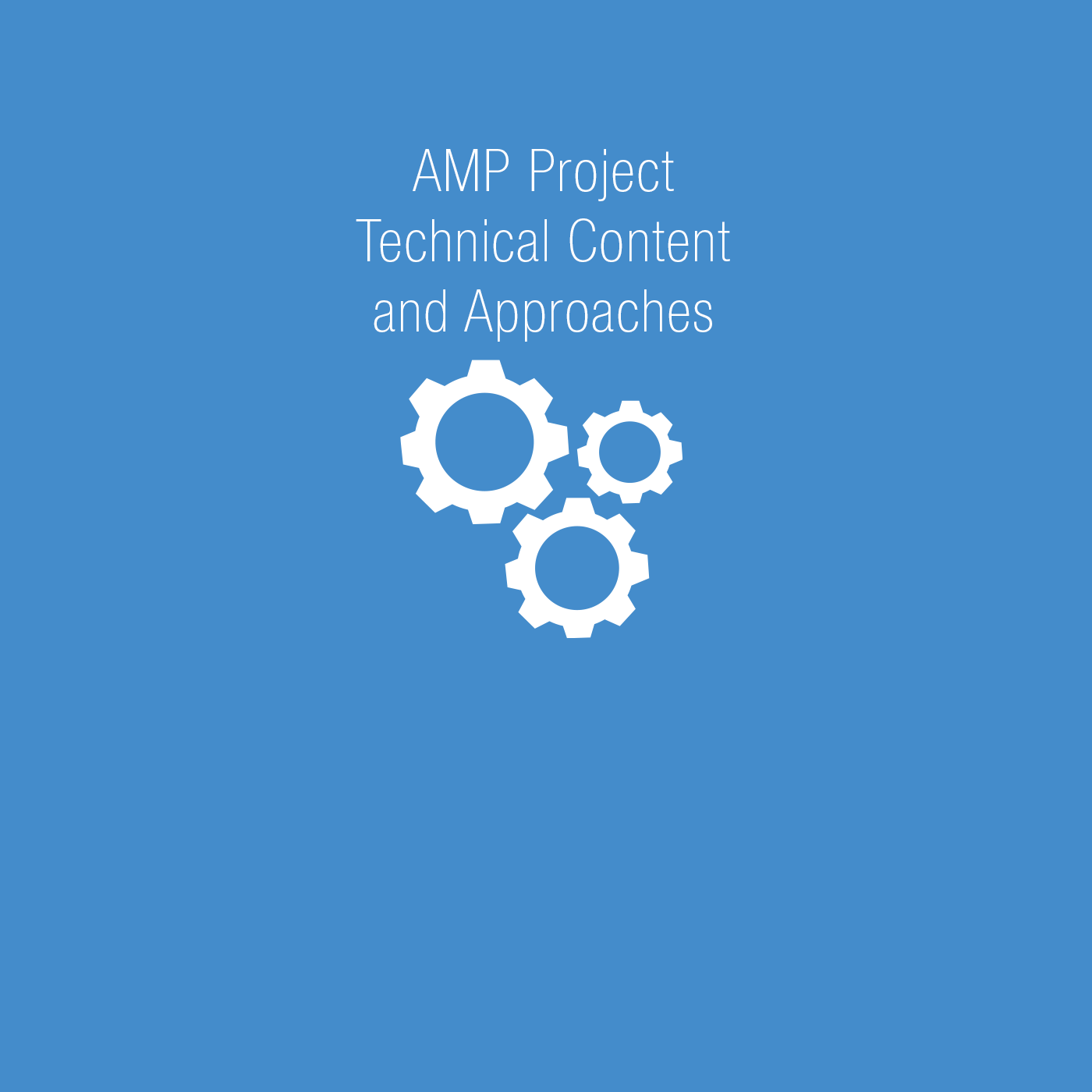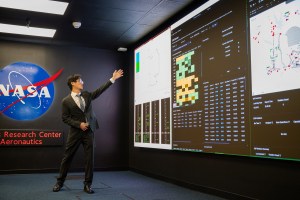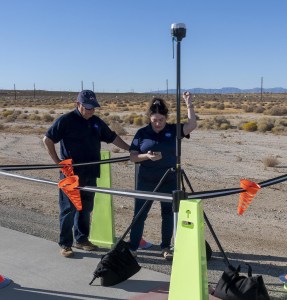The Air Mobility Pathfinders (AMP) project will tackle one of the most important challenges in the Advanced Air Mobility industry – researching how to safely integrate emerging electric air taxi technologies into cities and the national airspace system to help revolutionize air transportation.
The AMP project is organized to include this technical content and approaches:
Automated Flight and Contingency Management (AFCM) subproject
The AMP project is focused primarily on helping the UAM ecosystem to achieve UAM Maturity Level (UML)-4, which is characterized by medium total traffic levels, medium complexity operations, and reliance on collaborative and responsive automation. UML-4 is anticipated to be enabled following several key regulatory changes that significantly increase the reliability of UAM transportation and its scalability.
These regulatory changes would extend UAM operations into Instrument Meteorological Conditions and reduce the specialized skills and associated training needed by human pilots and controllers as high-assurance automated systems are trusted to perform selected, safety-critical functions.
The AFCM subproject is formulated to address some of the fundamental automation barriers that need to be solved in order to progress towards UML-4 and is intended to make key research advances in the areas of means of compliance for fight and propulsion system control functional capabilities, vehicle pilot/operator interfaces that are consistent with UAM vehicle configurations and operations, and simplified vehicle handling approaches to vehicle operations.
The AFCM subproject will address key barriers of piloting automated vehicles by developing validated system concepts and research findings to inform guidelines and standards for integrated pilot-interface systems, and by developing and validating candidate certification methods of compliance for simplified vehicle handling qualities and operations concepts.
AFCM also will address assured vehicle automation by developing and validating performance requirements for systems, services and functions that enable intended automation capabilities; developing and evaluating preliminary system concepts and architectures for aircraft automation supporting UML-4 terminal area operations and tailorable to on-board and remote piloted operations; and developing guidance for achieving requisite assurance levels for critical automation under non-traditional operational paradigms.
High Density Vertiplex (HDV) subproject
HDV is responsible the development and maturation of automation technologies and architectures that serve AMP community needs for infrastructure to support AMP operations. To this end, HDV will focus on the development and testing of concepts, requirements, software architectures, and technologies needed for terminal environment around vertiports – specifically focusing on how automation can increase safety, efficiency, and scalability of flight operations in these environments. While HDV technologies, requirements, and architectures will be relevant to broad AMP operations, the HDV project will focus on uses cases that are specific for and closely aligned with UAM operations.
Key barriers for UAM operations in the vertiport domain include a lack of standardization around required technologies and performance to support high tempo and throughput UAM business cases around vertiports; mature concepts, procedures, and technologies supporting automated approach and landing; automated merging and spacing; and automated contingency decision making for eVTOL operations in vertiport environments.
A barrier also exists in the development of evaluation and testing practices necessary for demonstrating that automated mitigations warrant “safety credit” from the regulator as a means of compliance to existing or future regulations. This is particularly true for the use of automation to support beyond visual line of sight (BVLOS) operations for UAS. Furthermore, a key barrier exists between required data information exchanges between the aircraft, airspace service provider, and the vertiport systems to support increasingly dense operations. Addressing these barriers are critical to ensuring that the industry is ready to support UAM Maturity Level 4 (UML-4) operations.
The HDV subproject will address these challenges by designing concepts, procedures, and technologies focused on UAM operations and leveraging subscale testing using small UAS to assess suitability and verify requirements around UAS and vertiport automation architectures. HDV will leverage research from the ARMD portfolio to develop a testing environment which captures the interactions and data exchanges between aircraft automation, automation in airspace services, and automation on the vertiport to evaluate the proof of concept of medium to high density operations in and out of a vertiport environment.
The HDV subproject will use a “crawl, walk, run” approach to build-up complexity in the operational environment, and integrate and mature the aircraft-airspace-vertiport automation technology needed to support three main use cases: (1) automated landing, (2) automated merging and spacing, and (3) automated contingency decision making. HDV will focus development on the technology gaps associated with the use cases (e.g. auto-land capability and vertiport automation) and will leverage and integrate other ARMD technologies or industry technologies to support build-out of the environment necessary for vertiport testing.
National Campaign (NC) subproject
As part of its work with the aviation community to identify and address the challenges ahead for advanced air mobility concepts, NASA plans to host a series of National Campaign events that will afford participants the opportunity to demonstrate system level safety and integration scenarios within a robust and relevant environment.
The purpose of the NC is to promote public confidence in AMP safety and facilitate community-wide learning while capturing the public’s imagination. The NC seeks to challenge the industry to execute progressively more difficult ecosystem-wide system-level safety and integration scenarios, demonstrate practical and scalable system concepts, and build a knowledge base for development of requirements and standards.
The NC series progresses through a set of scenarios that increase in complexity, advanced technologies, and ability to verify readiness for operational use by standardized testing in partnership with the FAA. NASA believes an AMP ecosystem-wide strategy can serve as a tool for the entire community to increase the maturity of the Urban Air Mobility Maturity Level across government, industry, and academia together.
The NC subproject also contains the Integration of Automated Systems technical area that is focused on the integration and flight evaluation of system-wide automation technology architectures designed to enable UML-4 and the National Campaign series and is a target for the key capstone demonstrations of automation technologies developed in the AFCM and HDV subprojects.
Air Mobility Pathfinders Project



































